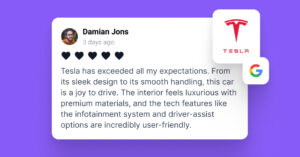Creating effective location pages is key for any multi-location business looking to capture website and GBP traffic and drive customer engagement.
After all, these pages go beyond listing an address—they’re a powerful tool to improve your online visibility, attract nearby customers, and boost conversions.
So, I’ll tell you what you need need to know to craft your own location page for every location you have, including SEO tactics, content strategies, and design elements.
Ready to best every SEO metric for your business? Keep on reading below!
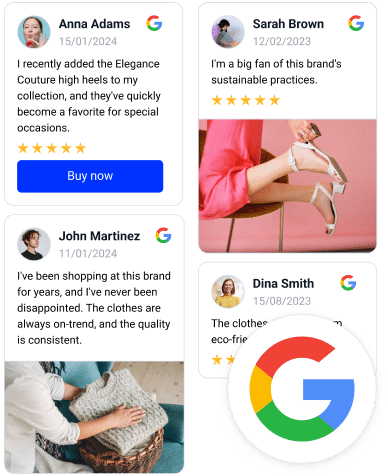
Embed a PRO Google Reviews Widget
Automatically collect and embed Google reviews and use AI reviews management tools to unlock your website’s sales potential.
FYI: You can automatically embed Google reviews widget on your website and show authentic user-generated reviews, increasing trust for more sales. Try it now.
What are location pages for your business?
Essentially, location pages are dedicated sections on your website that highlight individual business locations, making it easy for potential customers to find essential information about each spot.
These pages typically feature details like the address, contact information, hours of operation, and unique services or offerings specific to that location.
For your multi-location business, well-optimized location pages help improve your visibility as you target location-specific keywords via your Google Business Profile attributes, thus making it easier for customers to find what they need.
If you craft your location pages properly and with the right info, you’ll build credibility, drive foot traffic, and cater to the needs of each community you serve. After all, many of the components you include in them serve as ranking factors.
For instance, embedding Google reviews, catering to local searchers, having your page in local business listings, and social media engagement are all important!
Importance of location pages for SEO performance
Location pages play a vital role in boosting your business’s SEO by improving visibility in local search results. Here are all the ways they impact SEO performance:
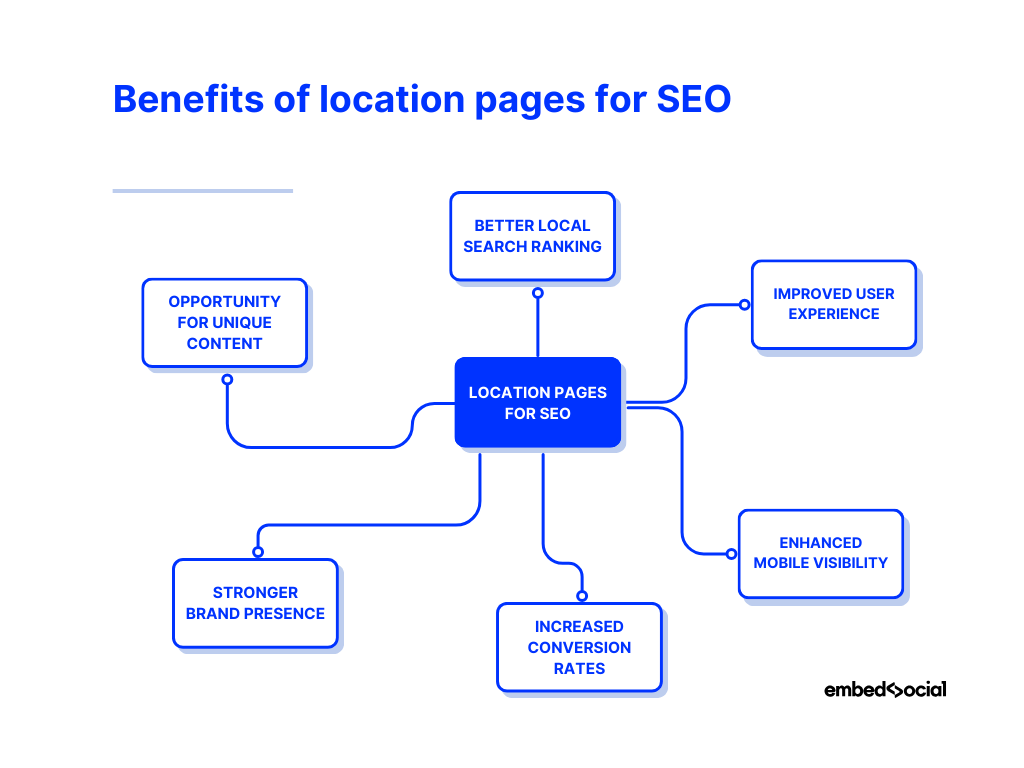
- Better local search ranking—location pages signal to search engines that your business is relevant to specific areas, helping improve rankings for local queries;
- Improved user experience—detailed, accessible information makes it easier for users to find the exact location they need, boosting engagement and reducing bounce rates;
- Enhanced mobile visibility—with local searches on mobile devices growing, optimized location pages ensure users can quickly find nearby locations on the go;
- Increased conversion rates—by offering tailored information for each location, you’re more likely to convert local visitors who are ready to make a purchase;
- Stronger brand presence—location pages contribute to a cohesive online presence, reinforcing your brand’s availability and reliability across multiple locations;
- Opportunity for unique content—by adding location-specific reviews, photos, and descriptions, you can avoid duplicate content and enrich your site with valuable, local content.
Therefore, when crafted strategically, your location pages are a powerful asset in your SEO strategy, helping drive targeted traffic and build local authority. Also, without optimizing them, you will probably never rank in the Google Local Pack.
Building your business locations pages: 10 main elements
After adding all your locations to your Google Business Profile, you can start building separate web pages for all of them. That said, you must ensure they include all relevant information for their specific areas to help both users and search engines.
Then, when creating location pages, you should re-use the location page design for every particular business location but add unique information to each one:
- Localized URL, page title, and title tag
- Accurate NAP information
- Operating hours & contact details
- Location-specific schema markup
- Customer reviews & testimonials
- Unique location-specific content
- Products, inventory, offers & specials
- Location-specific photos and social media feeds
- Location attributes & features
- Embedded Google Maps

1. Localized URL, page title, and title tag
Creating a URL, page title, and title tag that reflect each location helps search engines and users understand the focus of the local page. Including the city or neighborhood in these elements reinforces local relevance and makes each page discoverable in local searches.
A well-structured, localized URL and title can improve click-through rates, as they clearly indicate the specific location being highlighted, contributing positively to SEO.
Example: A real estate agency uses URLs like /locations/boston and /locations/san-francisco, and title tags such as “Homes for Sale in Boston | [Agency Name]” or “San Francisco Real Estate Experts | [Agency Name].” This localized structure helps search engines and users identify the focus of each page.
Pro Tip: Structure your URL to include the location name (e.g., /locations/city-name) and use concise, descriptive title tags with keywords like “dentist in [city]” or “restaurant near [neighborhood].” This enhances local search visibility and helps users with what they need.
2. Accurate NAP information
Consistency in your Name, Address, and Phone number (NAP) across all platforms is essential for building trust and ranking well in local searches.
After all, search engines and customers rely on these details to locate your business accurately, so you must keep them up to date at all times!
Example: A multi-location coffee chain ensures that each location page lists the correct NAP information in the same format across their site, social media, and Google Business Profile. Via consistency, each page supports accurate location targeting in search engines, helping customers find the right branch with confidence.
Pro tip: You can use the same design for NAP data on all your pages, and you’ll only have to swap out the relevant data for said location.
3. Operating hours & contact details
You must have up-to-date operating hours and contact details on each page, as they are critical for helping customers reach your business at the right times. This is usually as part of your NAP information.
Accurate information reduces frustration, enhances the user experience, and signals to search engines that your content is well-maintained, improving local SEO.
Example: A retail store includes regular and holiday hours on each location page, with a “Last updated: 2025” note next to the contact details. During the holiday season, they add extended shopping hours for select locations, ensuring customers always have the most current information and reducing the chance of missed visits.
Pro Tip: Include holiday hours or seasonal changes directly on each location page, so customers always know when you’re open. Plus, adding a “last updated” note near the contact details can also reassure visitors that the information is current.
4. Location-specific schema markup
Applying schema markup to each location page helps search engines understand the structure and content of your information, including addresses, hours, and offers.
This markup can improve how your pages appear in search results, often resulting in enhanced features like rich snippets that display key details directly in search.
Schema markup not only boosts SEO by making your pages more accessible to search engines, but it also provides customers with essential information at a glance, driving higher click-through rates.
Example: A restaurant chain applies “LocalBusiness” schema markup to each location page, enabling Google to display each restaurant’s hours, address, and ratings directly in search results. This visibility attracts more clicks from local searchers and makes it easy for customers to find relevant details instantly.
Pro Tip: Use structured data for each location page with fields like “address,” “telephone,” “openingHours,” and “review.” Test your schema using Google’s Rich Results Test tool to ensure it’s implemented correctly and is fully visible in search results, maximizing the SEO benefits.
5. Customer reviews & testimonials
Displaying online reviews helps establish credibility and social proof for each location, encouraging potential customers to trust your business.
Reviews are a powerful influence on purchasing decisions, and showcasing them on location pages can lead to higher conversions and better local rankings.
For that reason, the management of Google reviews for your multi-location business becomes one of the most important things you can do to prosper online.
Example: A fitness gym chain showcases a Google reviews widget on each location page, with comments specific to that branch, like “The trainers at the Westside gym are fantastic.” Highlighting unique reviews adds social proof, giving potential customers insight into the specific benefits and atmosphere of each location.
Pro Tip: Prioritize recent reviews to keep the content fresh and relevant. You can also highlight testimonials that mention specific products, services, or staff at that location to add a personal touch and show potential customers what makes each location unique.
FYI: You can automatically embed Google reviews widget on your website and show authentic user-generated reviews, increasing trust for more sales. Try it now.
6. Unique location-specific content
Tailored content like descriptions, service highlights, and local insights showcases the characteristics of each location and boosts its user experience and SEO.
With this unique data added to your pages, you avoid duplicate content issues and show search engines the relevance of each location to its specific audience.
Example: A dental practice with locations in several neighborhoods includes content specific to each area, like “Our Eastside clinic offers pediatric dental services.” This tailored approach adds value to local customers and distinguishes each location page, preventing duplicate content issues and showing Google unique offerings.
Pro tip: Incorporate local keywords that resonate with each community, like neighborhood names or nearby landmarks. Also, add unique local insights—such as seasonal offerings or community events—so that each page feels personalized and relevant.
7. Location-specific photos and social media feeds
Authentic images specific to each location give visitors a visual sense of your business’s presence in their area and they enhance the engagement of the page.
This type of content provides originality and authenticity that contributes positively to your local SEO, signaling to search engines that it’s the real deal.
Example: A hotel chain uses high-quality photos of each property, capturing unique interior designs and surroundings. The page for their beachside location shows photos of ocean views from the rooms, while the city location highlights nearby landmarks, creating an authentic visual appeal.
Pro Tip: Use images that highlight unique features of each location, like local decor, popular products, or recognizable surroundings. Adding descriptive alt text with location-specific keywords can also boost SEO while ensuring your images are accessible.
8. Products, inventory, offers & specials
Including information about location-specific products, current inventory, offers, and specials on each page gives potential customers an incentive to visit.
Detailing these unique offerings can make each location page feel more relevant and personalized, encouraging both in-person visits and higher engagement.
This information also signals to search engines that your page content is fresh and valuable, which can contribute positively to local SEO.
Example: A grocery store chain highlights special products and weekly deals on each location page, like “Our Uptown store offers a wider selection of organic produce” or “Visit our Eastside location for this week’s buy-one-get-one-free bakery specials.” By keeping these details up to date, they attract more local visitors and create a sense of exclusivity around each store’s offerings.
Pro Tip: Regularly update location pages with new deals or seasonal promotions to keep content fresh and engaging. Adding structured data for offers and inventory can also improve how these pages display in search results, boosting both visibility and click-through rates.
9. Location attributes & features
Highlighting each location’s unique attributes and features on its page allows potential customers to see what makes that location special. Including specifics like available services, special amenities, or unique products provides more detailed information and relevance for the page.
Adding these location-specific details increases the page’s value, offering a more engaging user experience while distinguishing each location in search results.
Example: A spa chain includes unique attributes for each location on its pages, like “Our Midtown spa offers exclusive aromatherapy services” or “Our Downtown spa features a rooftop relaxation area with city views.” These specific details help each page stand out, giving visitors more reasons to choose the right location.
Pro Tip: Emphasize unique features in a short list or icon format to make them visually engaging and easy to scan. This helps potential customers quickly understand what each location offers and improves the page’s SEO by highlighting location-specific keywords naturally.
10. Embedded Google Maps
Integrating Google Maps marketing on each location page not only aids customer navigation but also reinforces local relevance to search engines.
Google Maps embeds provide an interactive and user-friendly way for visitors to find directions, which enhances engagement and improves rankings in local searches.
Example: A restaurant chain embeds a customized Google Map on each location page, with nearby landmarks and parking suggestions highlighted. For instance, their Downtown location page mentions a nearby metro station and parking garages, making it easier for customers to plan their visit.
Pro Tip: Customize your Google Maps embed to show key landmarks or parking options near each location—an extra detail to demonstrates to search engines that your page is highly relevant to local searchers, thus boosting your local SEO audit results.
Getting started: Widgets to add to your location pages right now
Optimizing your location landing pages has never been easier with tools like EmbedSocial. In just a few steps, you can add essential elements that improve local SEO and enhance the user experience. Here’s how EmbedSocial can elevate your location pages:
1. Local SEO Schema Markup
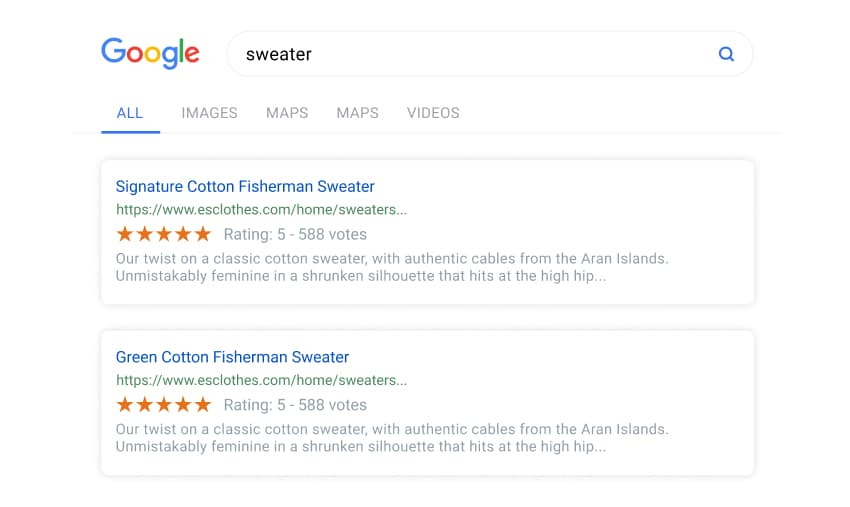
Stand out in search results with aggregated rating stars displayed directly on Google. With EmbedSocial’s built-in schema markup, you’ll boost your page’s visibility and credibility, encouraging more clicks from potential customers.
2. Instagram feed for each location
Showcase a dynamic Instagram feed tailored to each specific location or account. This feature keeps your page visually engaging and provides real-time updates, making your brand more relatable to local audiences.
3. Google reviews widget
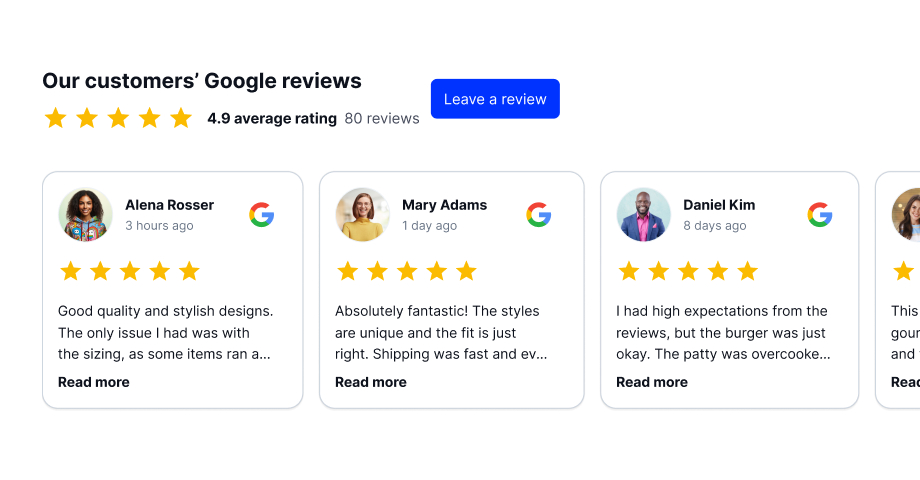
Build trust by embedding a Google Reviews widget for each location. This automatically updated feed ensures visitors see authentic, recent customer feedback, fostering confidence in your business.
4. Aggregated rating badges
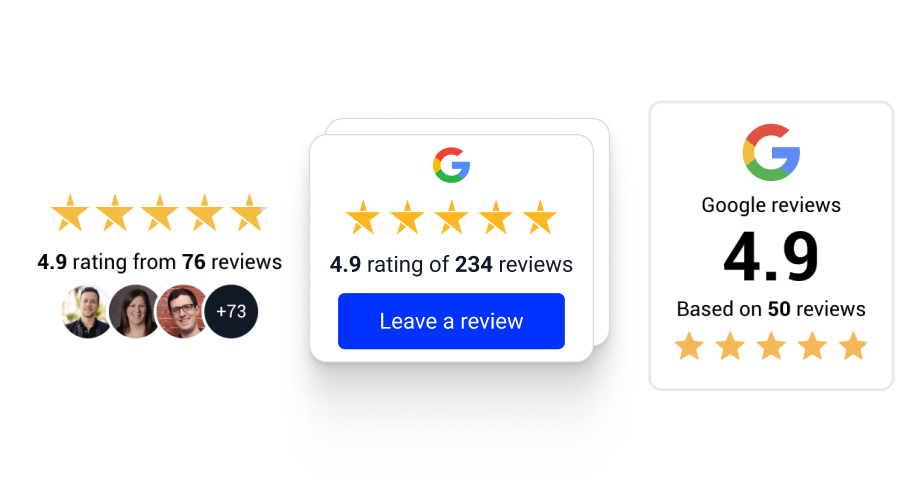
Highlight your high ratings with attention-grabbing badges for your hero section. Perfect for creating a powerful first impression, these badges instantly communicate quality and reliability to your audience.
By incorporating these elements, you’ll not only enhance your SEO performance but also create a professional, engaging, and trustworthy online presence for each of your locations.
Click below to get started:
FYI: You can automatically embed Google reviews widget on your website and show authentic user-generated reviews, increasing trust for more sales. Try it now.
Thanks to the direct access to the GBP API, EmbedSocial offers:
- Aggregation and management of Google reviews at scale
- Moderating and displaying feedback in customizable widgets
- Replying to Google reviews from every location in one place
- Insightful GBP analytics to drive your business success
- Bulk updating Google Business Profiles from a single dashboard
- Scheduling Google Posts to all your GBP locations
- Simple management of your GBP access control
As you can see, you need all the GBP management services you can get your hands on even before you start building location pages for your multi-location business.
Location pages vs. geo pages: Main differences
While location pages focus on specific business branches or offices, providing essential details like address, hours, and unique offerings, geo pages target broader geographic areas, such as neighborhoods, cities, or regions. Geo pages are often used to capture traffic from searches related to a specific area where your business doesn’t have a physical location.
For businesses with multiple locations, location pages enhance visibility for each branch, while geo pages allow you to attract potential customers searching for services within your service area, even if they’re not tied to a particular address. The bottom line is that both types of pages support local SEO but serve distinct purposes in reaching local audiences.
SEO best practices for location pages
To make the most out of your SEO local landing pages, here are additional SEO-focused tactics to maximize their visibility and performance:
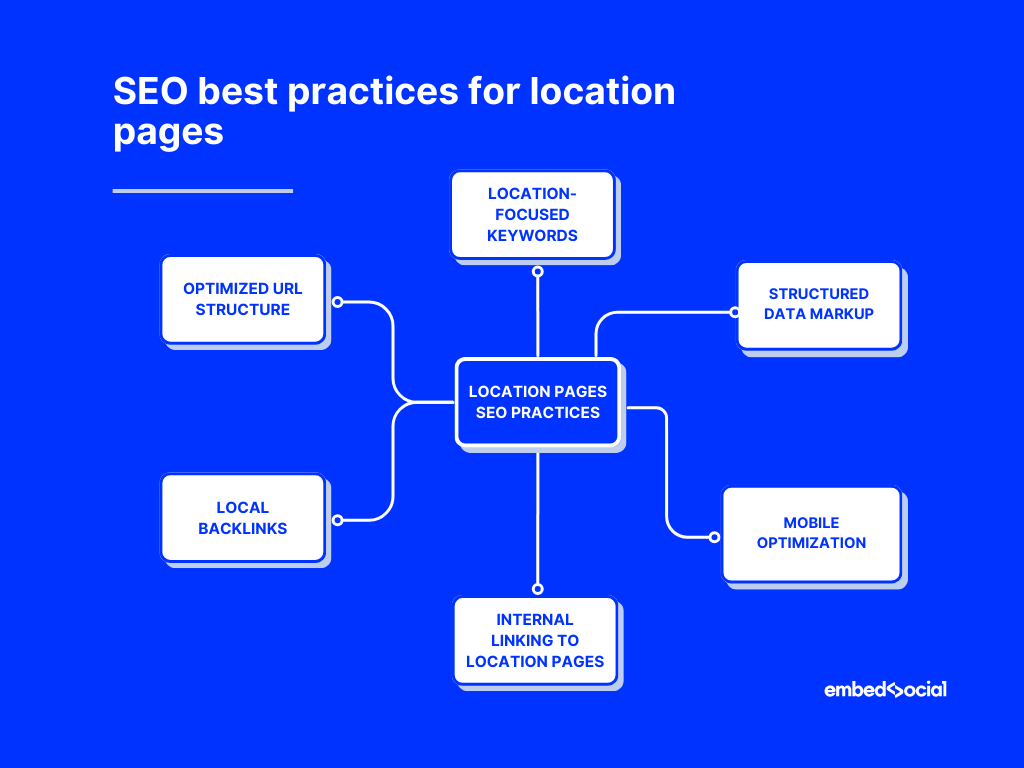
- Location-focused keywords—include relevant keywords for each location in titles, meta descriptions, and headers to improve local search visibility;
- Structured data markup—use schema markup to help search engines understand each location’s information, like address, phone number, and business hours;
- Mobile optimization—ensure location landing pages are mobile-friendly, as many local searches happen on mobile devices, impacting both user experience and rankings;
- Internal links to location pages—add relevant internal links to your location pages from pages on your site to enhance discoverability and signal their importance to search engines;
- Local backlinks—build relationships with local businesses or directories to obtain location-specific backlinks, which can increase your authority for local searches;
- Optimized URL structure—use a clean, descriptive URL format (e.g., /locations/city-name/) to make it easy for users and search engines to identify each page’s focus.
Understandably, these SEO best practices will make each location page easier for search engines to index and rank, driving more local traffic to your site.
However, before you do any of that, you must ensure you verify all your Google Business Profiles. Plus, stay on top of your GBP insights to see what works for you!
Conclusion: Use location page strategies to boost your multi-location business today!
To maximize the ranking chances for every single one of your business locations, you must create location pages as soon as possible. That way, you boost their search engine optimization, attract more customers, and ultimately, make more sales.
Before setting up your location pages, consider first optimizing your Google Business Profile, and the best way to do that is to sign up for a third-party GBP tool.
For instance, EmbedSocial offers a complete GBP platform that lets you bulk edit your GBP locations in top shape before you even optimize your individual pages.
After all, this is software built for multi-location businesses that want to dominate local rankings and capture the interest of customers near them.
Furthermore, by implementing elements like an accurate Google reviews widget, NAP information, unique content, embedded Google Maps, and schema markup, you ensure each page is informative.
Plus, tailoring content to highlight each location’s unique features and offers gives potential customers more reasons to engage with your business, driving both online traffic and in-person visits.
So, start enhancing your location pages today, and see how these changes elevate your business’s visibility, credibility, and customer reach across communities.
FAQs about location pages SEO
How do you create effective location pages?
To create effective location pages, include accurate NAP information, unique content for each location, and an embedded Google Map. Add essentials like operating hours, customer reviews, and high-quality images. For local SEO, use location-focused keywords, structured data, and a clear URL structure to enhance visibility in search results.
How to optimize location pages for SEO?
The best way to optimize location pages is to use location-specific keywords in titles, headings, and descriptions, and add structured data to improve search engine understanding. Also, include unique content, like local photos, services, and customer testimonials, and ensure accurate NAP information to boost credibility and visibility in local search.
Do location pages help SEO?
Yes, location pages significantly enhance SEO by targeting local search queries and making it easier for nearby customers to find your business online. These pages increase your relevance, improve Google Maps and Search rankings, and drive more foot traffic to each location.
What content should I include on each location page?
Each location page should include the address, contact information, hours of operation, a Google Map embed, customer reviews, and location-specific details. Adding unique content like photos and descriptions tailored to each location also improves SEO.
How often should I update my location pages?
Updating location pages regularly is important, especially when there are changes in operating hours, contact information, or services. Keeping content fresh not only helps with SEO but also ensures customers have access to accurate, up-to-date information.

